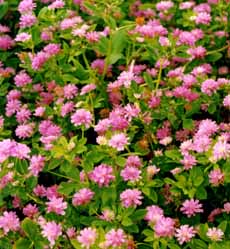 History and economic importance. Persian clover or shaftal (Trifolium rcsupinannn L.) belongs to the Lcguminosac family. The shaftal plant is native to South Asia. In Europe, it was cultivated as an ornamental plant for’ many years. After its establishment as a fodder crop. its cultivation spread to South America, West Germany Australia, and Central Asia. Now it occupies: a significant position as a-fodder crop in Egypt and Iran.
History and economic importance. Persian clover or shaftal (Trifolium rcsupinannn L.) belongs to the Lcguminosac family. The shaftal plant is native to South Asia. In Europe, it was cultivated as an ornamental plant for’ many years. After its establishment as a fodder crop. its cultivation spread to South America, West Germany Australia, and Central Asia. Now it occupies: a significant position as a-fodder crop in Egypt and Iran.
In Pakistan, shafjtal is also a relatively new fodder crop. It appears to have been introduced earlier than bereem, perhaps around 1910-15 in the Lahore region. Later it moved to the north western, cold irrigated, or heavy- rainfall areas of the country. This crop has not been planted on large areas because it gives a relatively low forage return and causes indigestion problems to animals. Shaftal is a multi-cut fodder like berseem and is considered a better soil-builder than berseem and sweet clover (senji). It can be grown in open rangelands for grazing. Its fodder is tender and nutritious and is relished by all animals. The plants contain protein (16.3%), crude fibre (30.8%), calcium (1.62%), phosphorus (0.32%), and other trace minerals (10.3%). The remaining contents consist of carbohydrates. nitrogen-free extract, and crude fat. If this fodder is fed alone in excess, it causes indigestion (tympanites) in cattle. Therefore it should be chopped and mixed with wheat straw.
Climate and soil. Shaftal performs well under a wide range of climatic and soil conditions, but grows best 011 well-drained, loamy soils. Light to heavy loam soils with irrigation facilities are best. It requires cool and moist moist weather conditions for good growth. It is generally grown in the Peshawar region .in NWFP, and some irrigated pockets in Punjab and Balochistun.
Seedbed preparation. A fine seedbed is prepared by giving three or four cultivations, each followed by planking. Generally, this crop is not fertilized, but 2 1/2 bags of DAP per hectare is recommended to increase fodder yield.
Seed rate and method of sowing. Seed at the rate of 12-10 kg/ha is usually sown by broadcasting in standing water, or on a moist seedbed covered slightly with soil. Sowing time. The optimum time for planting shaftal is the whole month of October and through tire middle of November. Interculture and weeding. No inter-culture is done with this crop. Kasni is a common weed which causes serious reduction in fodder yield; it should be rogued out early or even at planting, in the same way as advised for berseem, . Irrigations. The first irrigation should be given 8-10 days after plant- ing. Subsequent irrigations should be given at 20-25 day intervals, depending upon the weather.
Pests and discases. This crop usually remains safe from ‘pests and diseases and no great lose in fodder yield occurs because of them.
Harvesting Like berseem, shaftal can he cut four or five times during December-May.
Seed production. The seeds ripen in April-May: yield varies from 750-100 kg/ha.
Varieties. Growers have only local varieties or crop mixtures,







